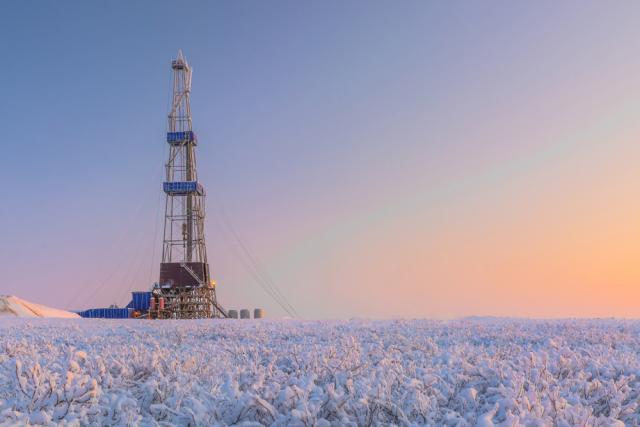
The future of oil demand is in large part driven by electric vehicle (EV) demand, Matthew Hill, vice president of supply chain research at Rystad Energy, said on May 2 at the Offshore Technology Conference in Houston. (Source: Shutterstock.com)
Editor's note: This article has been updated to clarify the market forces influencing the EV market and to correct Matthew Hale's name.
The future of oil demand is in large part driven by electric vehicle (EV) demand, Matthew Hale, vice president of supply chain research at Rystad Energy, said on May 2 at the Offshore Technology Conference in Houston.
Hale said electric vehicles may have an impact on displacing oil and gas, as well as oil exploration and drilling in the Arctic.
“There’s a lot of factors that affect the demand picture, but [electric vehicle adoption] is the dominant thing that’s going to displace a lot of oil demand,” he said. “Over half of new vehicle sales will be EVs by 2030. We feel fairly strongly about this.”
Hale predicted 2023 will be a pivotal year for determining the future adoption rate of electric vehicles as government incentives and market dynamics shift. China is cutting subsidies for electric vehicles, which could slow down their production and adoption by consumers, and Tesla is dropping the price of their cars in the U.S., which could lead to greater accessibility.
Improved accessibility to electric vehicles may entice current oil consumers to make the switch to electric, Hale said. “[2023] is a really important year to look at EVs and see which way they’re tracking. Is it higher or lower than our expectations?”
Hale predicts that, taking into consideration demand expectations for electric vehicle adoption, future demand for oil may be lower than previously anticipated, pushing oil prices down to as low as $69/bbl by 2030.
“We have so much [oil] discovered already,” Hale continued. If electric vehicles are adopted at the rate some are predicting they will be, Hale foresees “it’s going to drive the [oil] price down.”
“We think there’s going to be a lot of supply based on our expectations,” Hale said.
But these predictions aren’t set in stone.
“A lot of [the need for oil and gas] depends on having the EV option,” Hale said. “We think that will happen, but there’s a case where that doesn’t. And you’ll need more in the pipeline and demand will be higher.”
He also pointed out that this prediction is more about fuels than any other supply chain.
“The world’s going to consume more energy, that’s going to continue to be true,” he said. “It’s just which sector is going to be able to switch…We don’t see a lot of petrochemical demand going away.”
Logistics and public opinion
The challenges facing exploration and drilling in the Arctic are difficult enough to surpass without the added displacement that electric vehicle adoption brings. Reduced oil and gas demand due to EV adoption adds yet another hurdle to the many that drilling in the Arctic faces.
Projects in the Arctic can have over a decade of development time due to being reliant on ice cover. Exploration and drilling can only happen when the areas are ice-free, and in “some basins, we see ice throughout the year,” Hale said.
On top of that, extreme challenges come with transporting rigs to these remote locations that make it difficult to have a secondary market for the rigs, leaving them idle for seasons or even a year if the ice doesn’t clear.
“It’s really difficult to drill there,” Hale said.
Arctic exploration and drilling also face political and social opposition, with some banks publicly committing to stop funding Arctic development and vocal public backlash to projects.
“Whenever one of these comes up, it gets a lot of media attention, it gets a lot of negative attention,” Hale said. “Right or wrong, a lot of the public is against this.”
Banks ceasing funding operations is largely ineffective, he said.
“In this price environment, there’s a lot of cash,” Hale said, noting that Exxon Mobil and Chevron were good examples of major Arctic players that recently announced they have the cash to self-fund. “The people that are going to do that exploration in general are self-funded.”
He did specify that their ability to self-fund relied on the prices of oil staying stable.
Challenges of cost being what they are, Hale thinks negative public opinion could be an even bigger factor than oil prices when it comes to drilling in the Arctic.
“Are we even going to be allowed to do it?”
Recommended Reading
US Drillers Cut Oil, Gas Rigs for Third Week in a Row, Baker Hughes Says
2024-08-30 - The rig count is 8% below this time last year, according to Baker Hughes.
Helix Awarded Vessel Service, Charter Contracts Off Brazil
2024-08-28 - Helix Energy Solutions Group was awarded new three-year charter and service contracts, valued at an estimated $786 million, from Petrobras for Siem Helix 1 and Siem Helix 2.
Shell, Akselos Enter Enterprise Deal for Structural Performance Management
2024-08-28 - Shell Information Technology International will leverage Akselos’ structural performance management software to monitor the health and lifecycle of Shell’s critical assets in Qatar, Canada, the Gulf of Mexico and elsewhere.
From Exxon to APA, E&Ps Feel Need to Scratch Exploration Itch
2024-08-27 - Exxon Mobil is looking for its “next Permian,” which an executive said could be in Algeria.
E&P Highlights: Aug. 26, 2024
2024-08-26 - Here’s a roundup of the latest E&P headlines, with Ovintiv considering selling its Uinta assets and drilling operations beginning at the Anchois project offshore Morocco.




